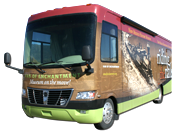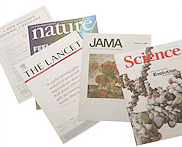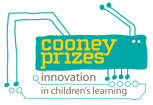Community Embraces New Word Game at Mid-Year Play Day This past Sunday, families at Takoma Park’s Seventh Annual Mid-Year Play Day had the opportunity to experience OtherWordly for the first time. Our educational language game drew curious children and parents to our table throughout the afternoon. Words in Space Several children gathered around our iPads […]
Read moreMonth: April 2011
 There is no better way to reach underserved audiences than to drive directly to them. Mobile museums, in converted RVs or semi-trailers, are delivering history, science and art experiences. Here are two great examples.
There is no better way to reach underserved audiences than to drive directly to them. Mobile museums, in converted RVs or semi-trailers, are delivering history, science and art experiences. Here are two great examples.
History
Reaching rural audiences for $10.71 per visitor, the “Van of Enchantment” brings cultural history to schools and public events in New Mexico — at no cost to visitors. New Mexico’s rich history traces back at least 11,000 years, and includes a flourishing Pueblo community in the 13th century, Spanish conquistadors and colonists in the 16th century, and railroads in the late 19th century. (more…)
 The system of getting knowledge about science to the public is broken. One major crack in the system is a disconnect between science museums and new science research.
The system of getting knowledge about science to the public is broken. One major crack in the system is a disconnect between science museums and new science research.
Science museums matter
Aside from the news media, which now has less science coverage as the journalism business contracts, museums play a vital role in how the public learns about science outside of school. New data show that science museums play an important part in this informal learning.
Despite enthusiastic scientists who are using social media, leading citizen science, and supporting other kinds of outreach, the vast majority of scientific information is ensconced in journals and conferences.
To connect this knowledge to the public, it’s common practice for closed-access journals to give journalists free (advance) access to new articles. But the same courtesy is not provided to science museums that would also benefit from new articles, as well as a back library of older articles. And science museums rarely budget for journal subscriptions. (more…)
![]() Over 70% of U.S. museums are in economic distress, according to a new report from the American Association of Museums. Here are some key findings: (more…)
Over 70% of U.S. museums are in economic distress, according to a new report from the American Association of Museums. Here are some key findings: (more…)
 Is the art enough? Probably not. Art museum revenues are falling and museums need to experiment with new business models and ways to build a buzz and relevance with young audiences.
Is the art enough? Probably not. Art museum revenues are falling and museums need to experiment with new business models and ways to build a buzz and relevance with young audiences.
Yesterday, art critic Judith Dobrzynski wrote in her Real Clear Arts blog about how an upcoming nighttime event at the Hirshhorn is elitist, flaunted, and inexcusable. Dobrzynski says, “I’ve said it before, but I’ll say it again, if museum officials don’t believe that art is enough, no one else will either.” What do you think? (more…)
 Innovation takes years, if not decades. An essay by Bill Buxton, principal scientist at Microsoft Research, introduced the idea of the “The Long Nose of Innovation.” In his Jan 2008 Business Week article, he draws parallels to the ‘long tail’ of products. This has applications to all kinds of planning.
Innovation takes years, if not decades. An essay by Bill Buxton, principal scientist at Microsoft Research, introduced the idea of the “The Long Nose of Innovation.” In his Jan 2008 Business Week article, he draws parallels to the ‘long tail’ of products. This has applications to all kinds of planning.
This is what the long nose looks like as a graph (it’s a nose pointing to the left): (more…)
![]() Fast talks enliven conferences. Ignite and TEDx are two models of fast-paced, engaging and fun conferences which can be adapted for both public-oriented conferences and professional conferences. It’s a refreshing break from long lectures and panel discussions… (more…)
Fast talks enliven conferences. Ignite and TEDx are two models of fast-paced, engaging and fun conferences which can be adapted for both public-oriented conferences and professional conferences. It’s a refreshing break from long lectures and panel discussions… (more…)
 The National STEM Video Game Challenge, awarded the $50k grand prize last week to a professional team that did not meet the eligibility criteria.
The National STEM Video Game Challenge, awarded the $50k grand prize last week to a professional team that did not meet the eligibility criteria.
This story came to my attention last week, when I wrote a blog post about a cool online science game for Middle School kids which won the grand prize as part of the contest run by the Joan Ganz Cooney Center at Sesame Workshop (the parent organization of Sesame Street) and E-Line Media. That article briefly mentioned anomalies in the contest, and the Cooney Center sent me an email: “Please take this article down as soon as possible because of a legal issue that is pending.” This made me wonder, is there a scandal on Sesame Street?
 “This is your target” the game says, pointing at an ordinary looking cartoon woman in a T-shirt and track pants. “If you pay close attention to the host’s weaknesses, you can make a disease that will get the host super duper sick!” (more…)
“This is your target” the game says, pointing at an ordinary looking cartoon woman in a T-shirt and track pants. “If you pay close attention to the host’s weaknesses, you can make a disease that will get the host super duper sick!” (more…)


 Museums and archives manage information about their collections, facilitate interdepartmental communication, and make collections available to the public using collection management software. Here’s a rundown of the collection management systems being
Museums and archives manage information about their collections, facilitate interdepartmental communication, and make collections available to the public using collection management software. Here’s a rundown of the collection management systems being  Drones, spy robots, Mach 6 warplanes, new energy sources, and climate monitoring are just a few of the new technologies being developed by the U.S. military to fight the wars of the future. These technologies depend on cutting edge scientific knowledge, and are fantastic ways to get the military-oriented public (nearly
Drones, spy robots, Mach 6 warplanes, new energy sources, and climate monitoring are just a few of the new technologies being developed by the U.S. military to fight the wars of the future. These technologies depend on cutting edge scientific knowledge, and are fantastic ways to get the military-oriented public (nearly